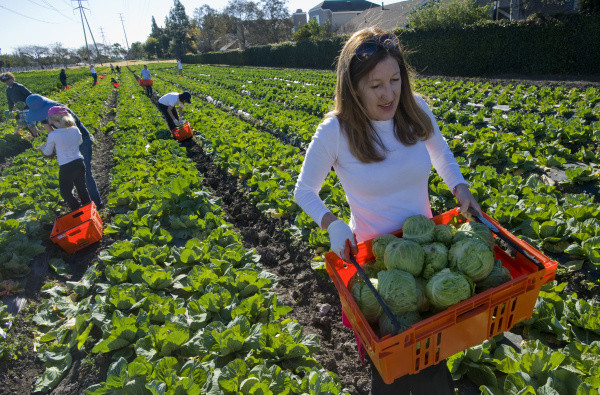
What used to be nothing more than barren, unused easement space for overhead utility lines in an ordinary southern California suburb has turned into a flourishing, edible landscape, thanks to the inspiration of several local visionaries who recognized incredible potential for the otherwise wasted site. And today, the 7.5-acre community garden helps feed more than 200,000 local people in need every year, proving just how viable and productive a few small acres of land can be in ending hunger.
Known as “The Incredible Edible Park,” the Irvine, California, green space is home to hundreds of rows of collard greens, broccoli, lettuce, squash, and a number of other food crops, not to mention a grove containing more than 80 citrus trees, all of which are broken up only by winding bicycle and walking paths that offer park visitors a front-row glimpse into how community-driven agriculture can reshape a city. And if they choose to do so, park visitors are free to pick their own food from the bounty as well.
“The city’s efforts led the way to the transformation of this site from 7.5 acres of weed-filled Southern California Edison (local power company) easement land into an agricultural field that is part of the Second Harvest’s food donation program,” wrote Sylvia Walker from the Redfin blog about the park. “[N]ot only did this mean the renovation of an unsightly field and savings to the city of $4,500 on weed abatement, but it also means an ongoing supply of food donations for the food bank.”
The project was a joint effort hatched by both the city and the power company, and is run entirely by volunteers. According to many involved with urban gardening initiatives, the park’s implementation and continued growth over the years is an ideal model for other cities to follow as they seek better land use management protocols. Particularly in denser urban areas where empty or trash-filled lots are common, cities can take advantage of these wasted land plots by teaming up with local nonprofits, educational institutions, churches, and other groups to establish edible landscaping parks.
Analysis:
This is a good example of the several edible parks which I came across in my research. These projects are important because they make a statement to communities about what food can look like, to the vast majority of us who are so used to encountering most of our food on a shelf. A cross between artistic landscaping and agricultural science, they show people how food can be a grounding, beautiful thing, and bring purpose and sensory appeal to spaces which would have otherwise been left unnoticed.



